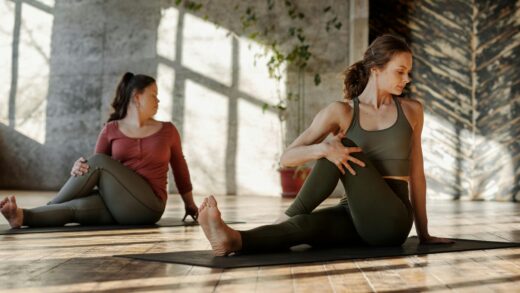Are you looking to get fit, lose weight, or simply improve your overall health? Exercise is an excellent way to achieve these goals, but with so many options available, it can be overwhelming to know where to start. In this article, we’ll explore some of the most popular categories of exercise and their benefits to help you find the perfect fit.
Cardiovascular Exercise
Cardiovascular exercise, or cardio, includes any activity that raises your heart rate and gets your blood pumping. This type of exercise is great for improving cardiovascular health, burning calories, and increasing endurance.
Examples of Cardio Exercises:
- Running: Great for building stamina and burning calories.
- Swimming: An easy workout that works the entire body.
- Cycling: Effective for building leg strength and endurance.
- Dancing: Fun and engaging while providing a solid workout.
- Jumping Rope: A quick and effective way to boost your heart rate.
Strength Training
Using resistance to develop muscle and boost strength is known as strength training. This type of exercise can improve bone density, boost metabolism, and reduce the risk of injury.
Examples of Strength Training Exercises:
- Weightlifting: Can include free weights or machines to target various muscle groups.
- Bodyweight Exercises: Such as push-ups, squats, and lunges that require no equipment.
- Resistance Band Training: Versatile and portable, ideal for all fitness levels.
Flexibility Training
Flexibility training enhances your range of motion and helps prevent injuries. It’s particularly beneficial for older adults and athletes.
Examples of Flexibility Training Exercises:
- Yoga: Focuses on stretching, balance, and breathing techniques.
- Pilates: Improves core strength and flexibility through controlled movements.
- Stretching: Simple stretches can be done daily to maintain flexibility.
Balance Training
Balance training improves coordination and stability, which is especially important for older adults at risk of falls.
Examples of Balance Training Exercises:
- Tai Chi: A gentle form of martial arts that emphasizes slow, controlled movements.
- Standing on One Leg: A simple exercise to enhance stability.
- Walking on a Balance Beam: Challenges balance and coordination.
High-Intensity Interval Training (HIIT)
Short intervals of vigorous exercise are interspersed with rest intervals in high-intensity interval training (HIIT). This method is effective for burning calories and improving fitness in a short amount of time.
Examples of HIIT Exercises:
- Sprint Intervals: Alternating between sprinting and walking/jogging.
- Tabata Workouts: 20 seconds of high-intensity exercise followed by 10 seconds of rest, repeated for several rounds.
- Burpee Challenges: High-intensity full-body exercises that elevate your heart rate.
Choosing the Right Exercise for You
When selecting a type of exercise, consider your fitness level, goals, and personal preferences:
- Fitness Level: Start with low-impact exercises like swimming or walking if you’ve never worked out before. As you feel more at ease, gradually up the intensity.
- Goals: Identify what you want to achieve—whether it’s weight loss, muscle gain, or overall fitness.
- Preferences: Choose activities that you enjoy to make it easier to stick with your routine.
Listening to Your Body
Avoiding overexertion and paying attention to your body are essential. Consult a healthcare provider and cease exercising if you feel pain or discomfort.
Conclusion
The most important aspect of your fitness journey is finding an exercise routine that you enjoy and can sustain. With a bit of effort and consistency, you can achieve your fitness goals and improve your overall health. Explore different types of exercise to discover what fits best for you!


